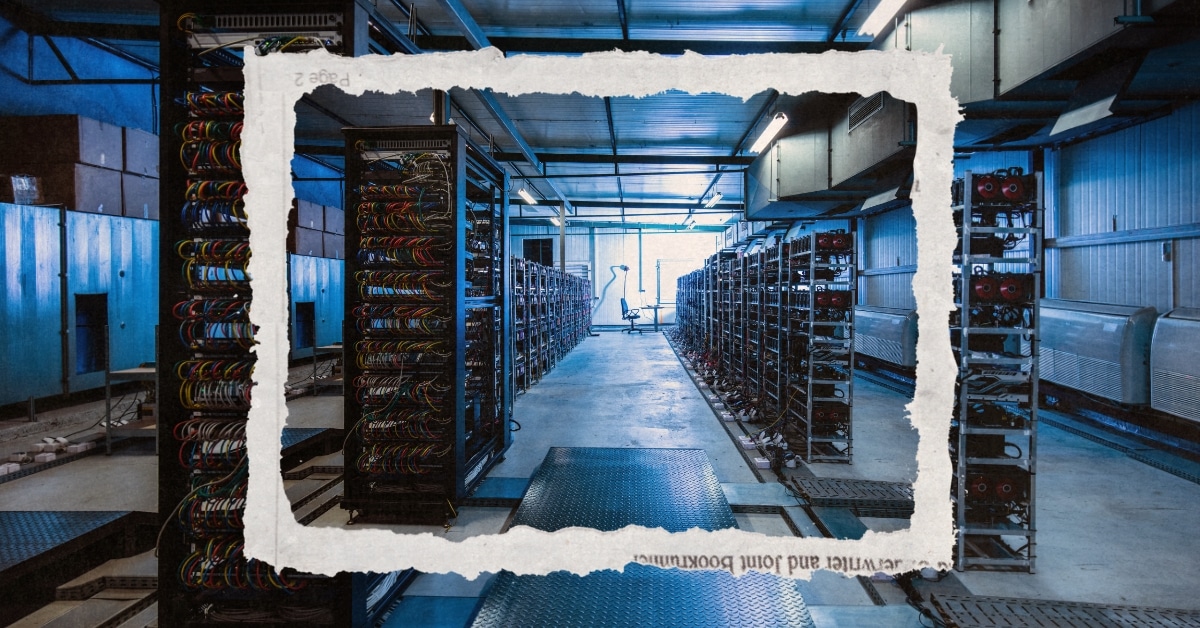News
5 Common Cryptocurrency Scams & How to Avoid Them

Paid non-client promotion: Affiliate links for the products on this page are from partners that compensate us (see our advertiser disclosure with our list of partners for more details). However, our opinions are our own. See how we rate investing products to write unbiased product reviews.
- Cryptocurrency is less regulated than other assets, which can lead to scams, fraud, and financial ruin.
- There are various forms of crypto market manipulation, including pump-and-dump schemes and rug pulls.
- Investors can avoid several common crypto scams by performing due diligence before trading.
A cryptocurrency is a digital token that can be exchanged for goods and services. But many retail investors and institutions treat cryptos as investments instead of means of exchange, buying certain coins and hoping to sell them for a profit at a later date.
As with any asset, investors must be careful before dabbling in these widely misunderstood assets.
What are cryptocurrency scams?
Cryptocurrencies are speculative by nature. They lack traditional fundamentals that investors can analyze and assign value to. As a result, cryptos tend to be volatile assets — their prices can drastically fluctuate on any given day.
Crypto markets are also less regulated in general, so it’s easier for bad actors to maliciously influence prices and take advantage of unsuspecting investors.
For these reasons, investors should be wary of the following crypto scams before they start investing in crypto.
Types of cryptocurrency scams
1. Market manipulation
Market manipulation is the deliberate attempt to artificially influence or interfere with asset prices. Typically, scammers manipulate markets to tip the scales in their favor and make quick returns. Several illicit trading activities fall under this umbrella term, including:
- Spoofing: This creates an illusion of momentum by placing fake buy or sell orders, which are canceled before they’re filled. Scammers frequently use dummy accounts and bots to place large trades, giving other investors the impression that demand is either increasing or decreasing.
- Front-running: This is the practice of making trades based on knowledge of future transactions. For instance, miners or node operators can have insight into pending trades. They could then leverage their inside access to make profitable trades ahead of major price swings.
- Churning: This is excessive trading by a broker in a client’s crypto account to generate additional commissions. Asset management firms can receive fees for managing crypto holdings. Therefore, nefarious brokers could abuse a commission-based payment structure to profit off of unaware clients. On top of unwarranted fees, the impacted individuals could also incur unnecessary tax liabilities as a result of churning.
Since cryptocurrency markets are still relatively new and less regulated, they’re more vulnerable to market manipulation. However, there are ways crypto traders can avoid falling victim to these scams.
For starters, it’s best to trade on larger, reputable exchanges that have established security policies and internal controls. Additionally, investors can safeguard against unlawful tactics in the crypto markets by thoroughly researching coins, brokers, and exchanges before making any financial decisions. For instance, legitimate cryptos and companies typically offer potential investors an abundance of learning materials on their websites.
Quick tip: Although plenty of investors day trade crypto, market manipulation usually impacts short-term trading activity. So, you can help protect against spontaneous price jumps by adopting a long-term outlook, otherwise known as “HODL-ing.” This stands for “hold on for dear life” and encourages a buy-and-hold investing strategy.
2. Pump-and-dump schemes
A pump-and-dump scheme represents an individual or group’s effort to inflate the price of an asset so that they can sell their own holdings for a profit.
It starts with the “pump.” To convince people to buy in, crypto schemers spread false or misleading information about minimally traded coins through social media, forums, and online communities. These posts often contain embellished due diligence (or “DD”) and promise an impending surge. They’ll use emojis like rocket ships paired with moons and diamonds alongside outstretched hands, implying an investment is about to pop and that investors should buy and hold.
Then comes the dump. As momentum swells, other investors cash in and drive the price up, while the schemers cash out and make a quick fortune. Once the market realizes the hype was fake, investors scurry to limit losses and the coin’s price plummets.
Spotting a pump-and-dump scheme boils down to credibility. If you use social media platforms like Reddit and Twitter to track crypto movements, look out for anonymous accounts with minimal posting history — or a track record of baseless pumping. These are likely fraudsters.
3. Rug pulls
A rug pull occurs when crypto developers abandon a project but keep the funds raised from investors. Bad actors can list a new token on a decentralized exchange, pair it with a legitimate cryptocurrency, and drum up interest on social media to lure in investors. Once enough money funnels into their token, the developers scratch the project and run with investor funds.
This scam plagues early investors who think they’re getting early access to up-and-coming cryptos, when in reality they’re scammed out of their money.
“If it sounds too good to be true, it probably is,” explains Shaun Heng, the VP of Growth & Operations at CoinMarketCap, one of the most frequented websites for tracking crypto prices. “Pay close attention to the websites and third parties involved. Don’t rely on comments from anyone on social media, no matter what people are saying or how many positive reviews there are. If you can’t find verifiable reviews, the chances of the opportunity being a scam are higher.”
Quick tip: By sticking to centralized cryptocurrency exchanges, which typically have stricter oversight and regulations, you have a better chance of avoiding illegitimate projects.
4. Traditional hacking and theft
Crypto markets have unique characteristics relative to other asset markets. But investors are still susceptible to traditional scams like account hacks and identity theft.
To trade crypto, investors need a crypto wallet, which can be a digital or physical device. These wallets have keys — both public and private. The former is a public address that allows crypto to be deposited into the wallet, similar to how routing and bank account numbers enable direct deposits. The latter is like the password to an online banking platform. Whoever has access to that password can control the funds within the account.
Just as you wouldn’t share your credit card number with a stranger, keep your private keys somewhere safe. Fraudsters can use this information to hack accounts and withdraw funds — and they’ll employ various tricks to get investors to reveal their private information.
Be cautious of crypto phishing emails that may pose as a crypto exchange or wallet provider. The same goes for out-of-the-blue and unsolicited promotions from suspicious websites and imposter accounts. Scammers often pretend to be celebrities or affiliates of major companies, promising guaranteed and immediate returns if you act quickly.
Quick tip: To avoid accidentally falling for phishing emails, verify that the sender’s email address is valid and/or recognizable. Often, scammers use addresses with generic domains and random characters.
5. Initial coin offering (ICO) scams
An initial coin offering (ICO) is the crypto equivalent of an initial public offering (IPO) for a stock. Through an ICO, companies can raise money to fund a crypto development, such as a token, app, or relevant service. In exchange for pledging funds, the investor receives an issuance of newly minted coins.
While IPOs are typically for well-established private businesses, companies that pursue ICOs aren’t necessarily in the same position. They could be fledgling startups without any operating history whatsoever, which can make it difficult to differentiate between a real offering and a scam. Similar to rug pulls, ICO scams collect the funds of early investors only to abandon the project shortly after.
An easy way to recognize an ICO scam — or simply an unprepared management team — is to review the company’s whitepaper. This document details the specifications behind the project, including strategy, goals, and market analysis. If the company doesn’t provide a whitepaper, that’s a red flag.
Quick tip: You can perform a background check on the ICO’s developers and management team. If the company’s ownership is anonymous or has a minimal track record in the crypto space, that should also be a cause of concern.
Insider’s Featured Crypto Apps
Chevron icon
It indicates an expandable section or menu, or sometimes previous / next navigation options.
Chevron icon
It indicates an expandable section or menu, or sometimes previous / next navigation options.
Editor’s Rating
4.14/5
A five pointed star
A five pointed star
A five pointed star
A five pointed star
A five pointed star
Editor’s Rating
4.34/5
A five pointed star
A five pointed star
A five pointed star
A five pointed star
A five pointed star
The bottom line
Decentralized finance can be a Catch-22. On one side, the lack of a singular governing body allows community-wide decisions and can open the doors to additional opportunities. On the other side, without standardized oversight, bad actors can commit fraud and deceive unsuspecting investors in a variety of ways.
However, much like in traditional asset markets, crypto investors can lower their risk of succumbing to market manipulation by being wary of these schemes and taking proactive measures. That includes using reputable exchanges and performing thorough research before making any investment decisions. If you come across a scam, you can report it to the Federal Trade Commission at ReportFraud.ftc.gov.


Top Offers From Our Partners


News
US Cryptocurrency Rules Delayed by ‘Never-Ending’ Lawsuits

Ripple CEO says cryptocurrency industry still seeking regulatory clarity from US
Speaking to Bloomberg News on Wednesday (July 17), Author: Brad Garlinghouse he said America is behind behind other countries which have already adopted cryptocurrency regulations.
“What we’re seeing, where it’s the UK, Japan, Singapore… even the European Union, more than two dozen countries have come together to provide a framework for cryptocurrency regulation,” Garlinghouse said.
“It’s frustrating that we as a country can’t get that regulatory framework in place. And instead, we have this never-ending lawsuit coming from the SEC that doesn’t really address the problem.”
Ripple has been the target of some of these legal disputes. Securities and Exchange Commission (SEC) sued the company in 2020, accusing it of conducting a $1.3 billion operation offering of unregistered securities tied to its XRP token.
However, last year a judge ruled that only Ripple’s institutional sales of XRP, not retail sales, violated the law, a decision widely seen as a victory for the cryptocurrency industry.
As PYMNTS noted at the time, that ruling has “far-reaching repercussions impact across the digital asset ecosystem, which has long maintained that its tokens do not represent securities contracts.”
However, Garlinghouse told Bloomberg on Wednesday that the company cannot wage multimillion-dollar legal battles over each token.
He spoke to the news agency from the Republican National Convention in Milwaukee, where the party is backing the candidacies of former President Donald Trump and Ohio Sen. J.D. Vance, both of whom are considered pro-cryptocurrency.
But Garlinghouse argued that cryptocurrencies “should not be a partisan issue,” and noted that he had recently attended a conference in Washington that included Democrats, including White House officials.
“I think they were there, listening to the industry… it was refreshing to start having that conversation,” she said.
President Joe Biden earlier this year he vetoed a measure which would have ended the SEC’s special rules for crypto-asset custodians. This legislation was supported by both the digital asset industry and the banking industry.
Ripple early this year donated $25 million to the cryptocurrency industry’s super PAC Fair Smoothiewith Garlinghouse stating at the time that such donations would continue every year, as long as the industry had its detractors.
Second Open SecretsWhich monitor spending For campaigns, the PAC has spent $13.4 million this year, much of it to help defeat Rep. Katie Porter’s (D-Calif.) U.S. Senate campaign.
News
The Future of Cybersecurity in the Cryptocurrency Industry

The cryptocurrency space has had a tumultuous journey, with its fair share of ups and downs. As we look to the future, one area that remains a constant focus is cybersecurity. The digital nature of cryptocurrencies makes them inherently vulnerable to cyber threats, and as the industry evolves, so does the landscape of potential risks.
In 2022, the cryptocurrency market faced significant challenges, with over $2 trillion in market value lost. This event served as a wake-up call for the industry, highlighting the need for robust cybersecurity measures. The future of cryptocurrency security is expected to see a shift towards more regulated and established institutions taking the reins of crypto technology and blockchain infrastructure.
The decentralized nature of cryptocurrencies offers numerous benefits, such as transparency and financial inclusion. However, it also introduces unique security challenges. The risk landscape is filled with threats such as hacking, phishing, ransomware attacks, malware, and social engineering. These threats not only lead to financial losses, but also damage the reputation and trust within the cryptocurrency ecosystem.
Mini-MBA Tekedia edition 15 ((September 9 – December 7, 2024) started recordings; Register today for discounts reserved for early bird customers.
Tekedia AI in Business Masterclass Opens registrations Here.
Join the Tekedia Capital Syndicate and IInvest in Africa’s best startups Here.
The decentralized nature of cryptocurrencies offers many benefits, but it also presents unique security challenges. Cyber risks such as hacking, phishing, and ransomware pose threats to the integrity of digital assets. The infrastructure that supports cryptocurrencies is not immune to vulnerabilities, including smart contract flaws and exchange hacks.
To address these vulnerabilities, the infrastructure that supports cryptocurrencies must be strengthened. Smart contract vulnerabilities, exchange hacks, wallet breaches, and flaws in the underlying blockchain technology are significant concerns that must be addressed to ensure the security and integrity of digital assets.
As cybercriminal tactics and techniques become more sophisticated, the cryptocurrency industry must stay ahead of the curve. The future will likely see more targeted attacks, exploiting weaknesses in infrastructure, networks, and human factors. This requires a proactive and multifaceted approach to cybersecurity.
To mitigate these risks, several measures must be adopted:
Strengthening security measures: Developers, exchanges, and wallet providers must improve security protocols, use strong encryption, implement multi-factor authentication, and conduct regular security audits.
Education and awareness: Users should be educated on best practices for protecting their digital assets, including using strong passwords, recognizing phishing attempts, and using hardware wallets for secure storage.
Looking ahead, the cryptocurrency industry is expected to see an increased focus on robust security measures. Blockchain projects and exchanges are likely to invest in advanced encryption techniques and decentralized storage solutions to protect user assets. The future impact of cyber risk on cryptocurrencies will depend on the collective efforts of stakeholders to address vulnerabilities and strengthen security measures.
Collective efforts by stakeholders in the cryptocurrency space are crucial to address vulnerabilities and strengthen security measures. While challenges persist, advances in cybersecurity technologies and practices offer hope for a more secure and resilient cryptocurrency ecosystem.
The future of cybersecurity in the cryptocurrency industry depends on finding a balance between innovation and regulation. It requires a collaborative effort from all parties involved, from developers to end users, to create a secure environment that fosters trust and growth in the industry. As we move forward, it is critical that lessons learned from past events guide the development of stronger security measures, ensuring the longevity and stability of cryptocurrencies as a vital part of the modern economic toolkit.
Like this:
Like Loading…
News
Bullish XRP and RLBK price predictions rise, outpacing the broader cryptocurrency market, prompting Shiba Inu holders to switch!

Bitcoin’s one-week surge from $60,000 has pushed other cryptocurrencies into an uptrend. However, for many altcoins, this trend has been temporary. Altcoins such as XRP and Shiba Inu (SHIB) have experienced price drops. However, Rollblock, a new altcoin on the Ethereum blockchain, has thrived during this period, attracting thousands of investors looking for long-term growth.
XRP’s Nearly 30% Growth Over Last Week Drops as Selling Pressure Increases
XRP is seeing further price decline as Ripple investors withdraw their profits from the token. The surge in XRP’s price to $0.64 in the past week has provided investors with a perfect opportunity to increase their returns in the short term. With the ongoing sell-off in XRP, XRP has jumped over 8% in the past day and is now trading at $0.59. However, analysts tracking XRP indicators predict that XRP could still extend its gains by over 30% in the coming weeks.
Shiba Inu (SHIB) marks its third consecutive day of losses
Shiba Inu (SHIB) is in a period of adjustment after a week of strong gains. In the last 24 hours, SHIB has seen a jump of over 7%, reflecting a natural market fluctuation. Analysts are observing a death cross on the Shiba Inu chart, which historically signals the potential for future opportunities as the market stabilizes. As investors explore new possibilities, some are diversifying into promising altcoins like Rollblock (RBLK) to strategically rebalance their portfolios and capitalize on the emerging trend.
Rollblock (RBLK) Up Another 7% as New Investors Join Pre-Sale
Rollblock (RBLK) has taken the cryptocurrency market by storm, having attracted investors from more popular altcoins like Shiba Inu (SHIB) and XRP. Rollblock’s growth is attributed to its utility in the $450 billion global gaming industry.
Rollblock aims to use blockchain technology to bridge the gap between centralized and decentralized gambling. With blockchain technology, Rollblock secures every transaction in its online casino, providing transparency and convenience to millions of players who are uncomfortable placing bets on other iGaming platforms.
This innovative use of blockchain technology in the industry has grown Rollblock to over 4,000 new users in less than two months. With plans to add sports betting, this number is expected to grow exponentially in Q3.
Rollblock uses a revenue sharing model that splits up to 30% of its casino’s weekly profits with token holders. This happens after Rollblock buys back $RBLK from the open market and uses half of it for rewards. The other half is burned to increase the price of $RBLK.
Rollblock price has seen four increases in the past month with $RBLK tokens now selling for $0.017. Analysts predict that at the current growth rate, Rollblock could increase by over 800% before the presale ends. For investors looking for a long-term token with growth potential, phase four is the best time to buy Rollblock before its price skyrockets!
Discover the exciting Rollblock (RBLK) pre-sale opportunities now!
Website:https://Rollblockpresale.io/
Social: https://linktr.ee/Rollblockcasino
No spam, no lies, just insights. You can unsubscribe at any time.
News
Texas Crypto Miners Turn to AI as Crypto Declines

As cryptocurrency mining becomes less profitable, Texas cryptocurrency mining companies are switching to supporting artificial intelligence companies.
Bitcoin miners, with their sprawling data centers and access to significant energy resources, are ideally suited for computationally intensive AI operations, and as cryptocurrency mining becomes less profitable, companies see this shift as a logical answer to their problems.
On Thursday, Houston-based Lancium and Denver-based Crusoe Energy Systems announced a multibillion-dollar deal to build a 200-megawatt data center near the West Texas city of Abilene to support advanced artificial intelligence applications such as medical research and aircraft design, CNBC reported. The plant represents the first phase of a larger 1.2 gigawatt project.
Lancium and Crusoe’s move into AI mirrors a broader trend among bitcoin miners. The combined market capitalization of the top U.S.-listed bitcoin miners hit a record $22.8 billion in June. Companies like Bit Digital and Hut 8 are diversifying into AI, with Bit Digital securing a $92 million annual revenue deal to supply Nvidia GPUs and Hut 8 raising $150 million to expand its AI data center.
But the growing popularity of these operations also presents challenges, particularly for the Texas power grid. Last month, the Electric Reliability Council of Texas announced that the state is expected to nearly double its energy production by 2030 to meet the high energy demands of data centers and cryptocurrency operations.
Lieutenant Governor Dan Patrick expressed concern about the projections.
“Cryptocurrency miners and data centers will account for more than 50% of the additional growth. We need to take a close look at these two sectors,” He wrote on Twitter/X. “They produce very few jobs compared to the incredible demands they place on our network. Cryptocurrency miners could actually make more money selling electricity to the network than they do from their cryptocurrency mining operations.”
Analysts predict significant growth in data center power capacity, which is expected to account for up to 9% of U.S. electricity consumption by 2030.
The operations also pose challenges for nearby cities. Earlier this month, TIME reported that a crypto-mining facility was seriously compromising the health of residents in the city of Granbury. TIME reported more than 40 people with serious health problems, including cardiovascular disease, high blood pressure and hearing loss. At least 10 of the residents needed to go to the emergency room or an urgent care facility.
The disturbances were caused by the extreme noise generated by the crypto-mining facility’s fans, which are used to keep the machines cool. While the proposed data center in Abilene would use liquid cooling systems, it’s still unclear whether the facility’s operations would pose a health risk to local residents.
-

 Nfts1 year ago
Nfts1 year agoShardLab Launches ZK-Based Tool for Digital Identity and NFT Vouchers
-

 News1 year ago
News1 year agoWallet recovery firms are abuzz as stranded cryptocurrency investors panic in the bitcoin boom
-

 Bitcoin1 year ago
Bitcoin1 year agoBitcoin, Ethereum, Solana and Cryptocurrency Markets Look Ready to ‘Send’ as Stars Align, According to Investor Chris Burniske
-

 Altcoins1 year ago
Altcoins1 year agoThree Altcoins Poised for Significant Growth in 2024: ETFS, OP, BLAST
-

 Altcoins1 year ago
Altcoins1 year agoAccumulate these altcoins now for maximum gains
-

 Nfts1 year ago
Nfts1 year agoOG Crypto Artist Trevor Jones Unveils Groundbreaking Collection of Ordinals | NFT CULTURE | NFT News | Web3 Culture
-

 Bitcoin1 year ago
Bitcoin1 year agoBillionaires are selling Nvidia stock and buying an index fund that could rise as much as 5,655%, according to some Wall Street analysts
-

 Videos9 months ago
Videos9 months agoKamala just won the boner! [Bad For Crypto]
-

 Videos1 year ago
Videos1 year agoLIVE FOMC 🚨 Could be CATASTROPHIC for Altcoins!
-

 News1 year ago
News1 year agoA Guide for Newcomers & Beginners – Forbes Advisor
-

 Videos1 year ago
Videos1 year agoAttention: a historically significant BITCOIN signal has just appeared!
-

 Videos1 year ago
Videos1 year agoSTOCK MARKET FUD! ⚠️ [Why This Is GREAT For Bitcoin Traders!]









